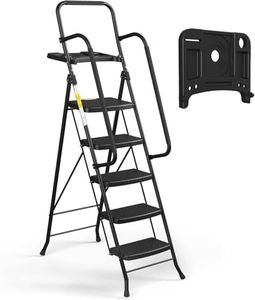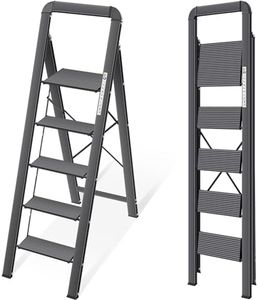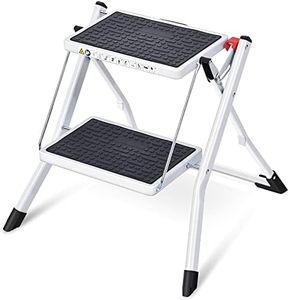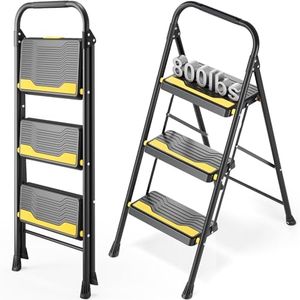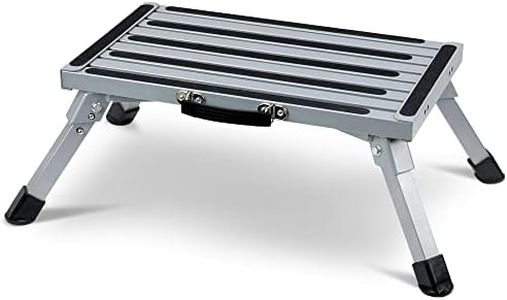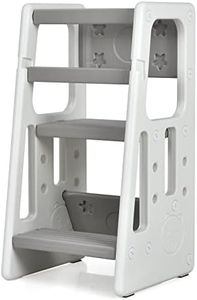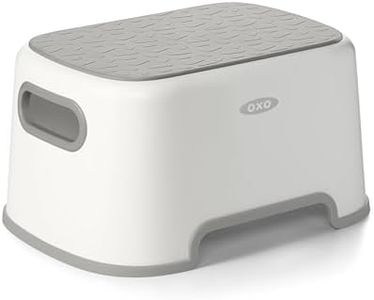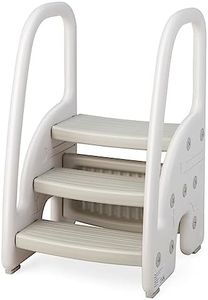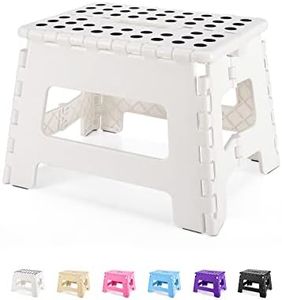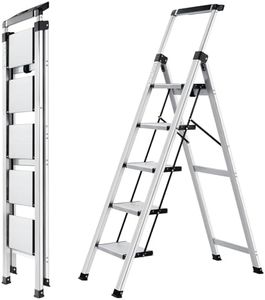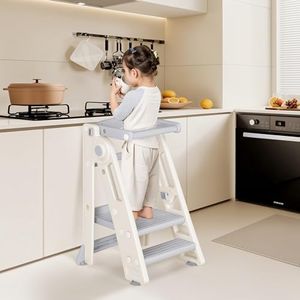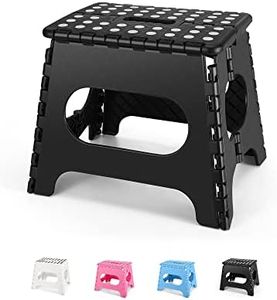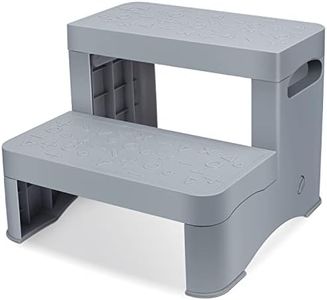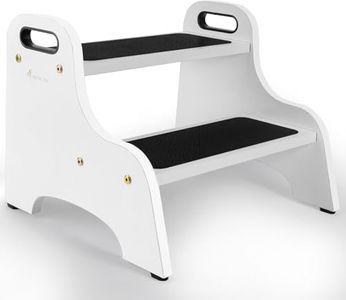We Use CookiesWe use cookies to enhance the security, performance,
functionality and for analytical and promotional activities. By continuing to browse this site you
are agreeing to our privacy policy
10 Best Step Stools
From leading brands and best sellers available on the web.By clicking on a link to a third party's website, log data is shared with that third party.
Buying Guide for the Best Step Stools
Step-stools are handy tools that help you safely reach higher places, whether you're grabbing something from a top shelf, changing a light bulb, or helping children access sinks or counters. When deciding which step-stool to buy, it’s important to consider how and where you’ll use it. The most comfortable and safe step-stool isn’t always the largest or tallest, but the one that fits your needs and your space while being sturdy and easy to move.HeightHeight refers to how tall the step-stool is from the floor to the highest step you can stand on. This is important because you should choose a step-stool tall enough to let you reach what you need, but not so tall that it's hard to store or makes you feel unstable. Step-stools usually range from single-step models (about 9-12 inches high) for a small boost, up to multi-step versions (18-36 inches or more) for higher reach. For everyday tasks like getting items from kitchen cabinets, short versions are often sufficient. For jobs like changing ceiling lights or painting, you might need a taller stool. Consider your ceilings, the heights you often need to reach, and your own comfort with heights when choosing.
MaterialMaterial describes what the step-stool is made out of, such as plastic, wood, or metal. This matters because different materials offer different levels of strength, weight, and durability. Plastic stools are usually lightweight and easy to carry, making them ideal for moving around the house, but might not handle heavy loads. Metal stools (like aluminum or steel) tend to be sturdier and hold more weight, making them good for heavier adults or frequent use, but they might be heavier to carry. Wood offers a classic look and good strength, but may be bulkier. Think about where you'll use the stool, how often you'll move it, and the weight it should safely support.
Weight CapacityWeight capacity is the maximum weight that a step-stool can safely support. This is important for safety because standing on a stool that can’t hold your weight can cause it to break or collapse. Step-stool capacities usually range from around 200 lbs. for lightweight models to 300 lbs. or more for heavy-duty versions. Consider not just your own weight but also if you’ll be carrying things while on the stool, or if multiple people of different sizes will use it. Always choose a stool rated for a higher weight than what you think you'll need to avoid accidents.
Number of Steps and Step SizeThis covers how many steps the stool has and how big each step is. Fewer, wider steps are great for stability and quick tasks, while stools with more steps offer more height but can be harder to climb safely. Wide steps or platforms are easier to stand on and more comfortable if you need to stay on the stool for longer periods. For children or anyone needing extra stability, look for stools with broad, slip-resistant steps.
Foldability and StorageFoldability means whether the step-stool can be easily folded when not in use. This is crucial for people with limited storage space or who want to keep the stool tucked away. Some stools are designed to fold flat, making them easy to slide behind a door or in a closet. Fixed stools take up more space but may feel more solid and reliable. Consider how much space you have for storage and whether you'll need to move the stool around the house.
Non-Slip FeaturesNon-slip features include rubber feet or step textures that stop the stool from sliding and prevent you from slipping while using it. This is especially important on smooth flooring like tile, wood, or linoleum. Look for stools with rubber grips on the feet and textured or coated steps if safety is a top concern for you, young children, or elderly users.
Weight of the StoolThis describes how heavy the step-stool itself is. A lightweight stool is easier to move between rooms, but sometimes lighter stools may feel less stable, especially on certain floors. Heavier stools may be sturdier but harder to carry. If you plan to move the stool often, look for a lighter model, but always check that it still feels solid and safe during use.
